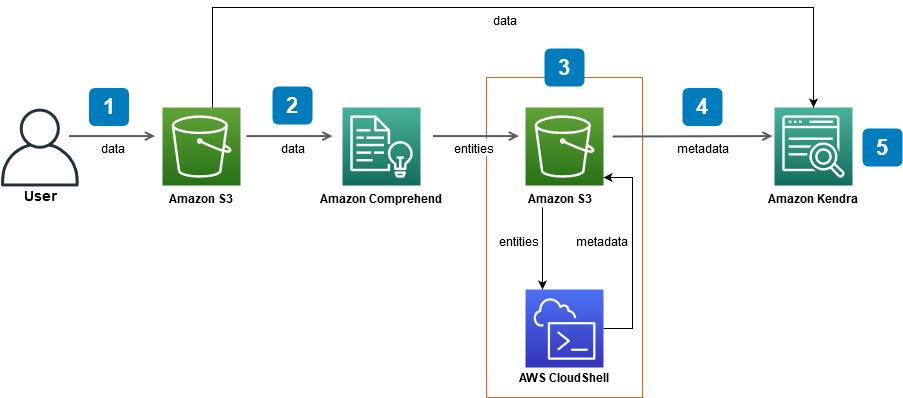The Power of Knowledge: Exploring AWS Machine Learning with Kendra
 Sumit Mondal
Sumit Mondal
Introduction:
In the ever-evolving landscape of technology, the cloud has become the cornerstone for innovation. Amazon Web Services (AWS), a key player in the cloud computing domain, continues to push the boundaries with its suite of services. In this blog post, we delve into the intersection of two cutting-edge technologies: AWS, the cloud computing giant, and Machine Learning (ML), a game-changer in the world of data analytics. At the heart of this exploration is AWS Kendra, a sophisticated machine learning service that promises to revolutionize how we interact with and extract insights from vast repositories of information.
Understanding AWS Machine Learning:
Before we delve into Kendra, let's take a moment to appreciate the significance of machine learning within the AWS ecosystem. AWS has been at the forefront of democratizing machine learning, making it accessible to developers and businesses of all sizes. With services like Amazon SageMaker, AWS has simplified the process of building, training, and deploying machine learning models. This has empowered organizations to harness the power of data-driven decision-making.
Enter AWS Kendra:
AWS Kendra, a service introduced to the AWS family, takes the capabilities of machine learning a step further. Kendra is designed to address a critical challenge faced by many enterprises: information retrieval. In a world inundated with data, finding relevant information quickly and accurately is a formidable task. Kendra steps in as a powerful solution, leveraging machine learning algorithms to enhance search capabilities, making information retrieval more intuitive and efficient.
Key Features of AWS Kendra:
Natural Language Processing (NLP): Kendra is equipped with advanced natural language processing capabilities, allowing users to interact with the system using natural language queries. This not only simplifies the search process but also makes it more user-friendly.
Relevance Ranking: Kendra doesn't just return search results; it prioritizes them based on relevance. Through continuous learning, the service improves its understanding of user intent, ensuring that the most pertinent information surfaces at the top of the search results.
Connectivity to Various Data Sources: Kendra seamlessly integrates with a variety of data sources, including databases, file systems, and web pages. This ensures that information scattered across different platforms can be consolidated and retrieved through a unified search experience.
Hands-On Example:
Let's illustrate the power of AWS Kendra with a hands-on example. Imagine a large e-commerce company with a vast product catalog. The company's customer support team often struggles to find precise answers to customer queries quickly. Implementing Kendra can significantly enhance their support system.
Step 1: Setting Up Kendra Index: The first step involves creating an index that represents the corpus of information Kendra will search through. This includes product documentation, FAQs, and support articles.
Step 2: Training Kendra: Kendra needs to be trained to understand the context and relationships within the data. This involves providing labeled examples of questions and their corresponding correct answers.
Step 3: Deploying Kendra: Once trained, Kendra is ready to be deployed. The integration can be done with existing applications or through the creation of a custom search interface.
Step 4: Interacting with Kendra: Now, let's consider a customer query: "How can I return a product?" Instead of relying on keyword matching, Kendra understands the intent behind the question and retrieves the most relevant information from the indexed data.
Conclusion:
AWS Kendra exemplifies the continuous innovation happening in the cloud and machine learning domains. By seamlessly combining the power of AWS with advanced machine learning capabilities, Kendra transforms information retrieval into a streamlined, user-friendly process. As businesses navigate the complexities of big data, Kendra emerges as a beacon, guiding them towards efficient and intelligent solutions for handling vast amounts of information.
In conclusion, the amalgamation of AWS, machine learning, and Kendra not only propels the capabilities of information retrieval but also opens new avenues for businesses to extract meaningful insights from their data. As we continue to ride the wave of technological advancements, AWS Kendra stands as a testament to the transformative potential of cloud-based machine learning services.
Subscribe to my newsletter
Read articles from Sumit Mondal directly inside your inbox. Subscribe to the newsletter, and don't miss out.
Written by

Sumit Mondal
Sumit Mondal
Hello Hashnode Community! I'm Sumit Mondal, your friendly neighborhood DevOps Engineer on a mission to elevate the world of software development and operations! Join me on Hashnode, and let's code, deploy, and innovate our way to success! Together, we'll shape the future of DevOps one commit at a time. #DevOps #Automation #ContinuousDelivery #HashnodeHero